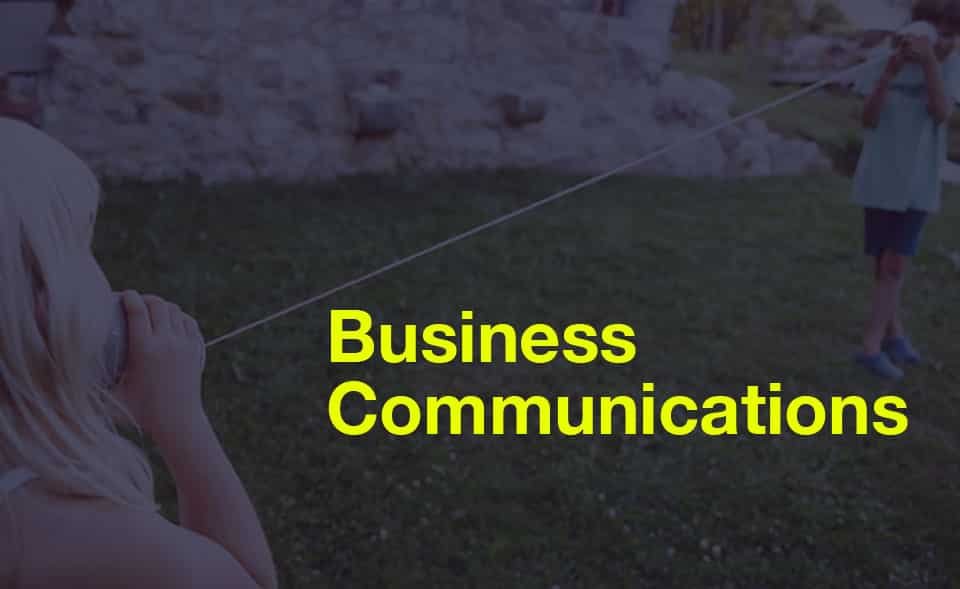How to command attention with credible, capable and catchy communication

In business we need to construct a message that gets peoples attention, gets it fast and continues to keep it. Whether that message is being delivered, on stage, in an article, proposal, meeting, marketing or conversation. The reality is that great communicators become better leaders, better salespeople and build better teams. If you can’t get clear fast, your wasting your time and other peoples time and in this economic climate time is a very valuable commodity.
There are few things worse than someone who just can’t or won’t get to the point. You have to get peoples attention from the get go. There is just too much waffle, too many long stories, to much death by power point, too much boring and vanilla. Getting your message clear opens doors, builds connections and creates opportunities you and your business never imagined. Here is the best way to get started:
Get credibility before you get going.
Why you or your company? Why this? and Why now? These are three questions you or your company need to answer up front, as soon as possible, because it gets people in the game and makes them want to listen to what’s next. You don’t necessarily need to do it in that order. You can see above that I went Why this? Why now? Why me? Just make sure you have some good credibility before you begin.
Match the message to the market.
To be influential you need to be sure to get the message right. There are 3 things to consider if you really want to make an impact.
- The message platform i.e. stage, boardroom, meeting, conference call, advertising, PR, article, interview, telephone chat, one on one meeting, email, memo, text. I know that some of these require no energy at all but if you are conscious of your state of mind, you can manage your energy levels and passion about the communication. You can be considered about your approach, the words you use and the emphasis you put on those words.
- The audience. Consider the size of the audience and the background they come from. Who else is communicating with them and why. Get a really good understanding of the average person you are communicating with. What are their struggles and challenges? How are they likely to feel in relation to your message?
- The message itself. Is it sensitive, informative, factual, helpful, insightful, motivational. The delivery style changes depending on the type of material you are delivering.
Authenticity trumps strategy
Your message needs to be real. That is, it needs to be clear that it came from you or your company. If you are going to outsource your communications, advertising and messaging, be sure the company knows exactly what the brand and culture of your company is. People will forgive you for a lot of things if they are sure you are being you. The biggest cut through in any medium with any audience is when you are real. People can spot someone who doesn’t believe in their message a mile away. (Look at politicians) If you are trying a communications strategy and its not working, I will bet its because its not real.
Don’t get lost
Your message needs to flow. If it hops, flips and flops from one place to another that are disconnected you lose the audience. You lose the opportunity to influence and you leave a lasting impression of confusion and misunderstanding. Structure is the path to creating that flow and over the past 20 years I have refined a 5-step message framework that leaders and companies have used time after time to get there message out. It works for pretty much any message in any medium for any market.
If you are not an absolute rock star professional, you should never wing it. Even the superstars like Robbie Williams, Oprah Winfrey, Gary Vaynerchuk, put in the work. Big businesses like Fedex, Google, Nike and Apple spend ages putting their communications together. They prepare probably more than anyone. You should to. Structure is the path to clear consistent communication.
Getting your act together
It doesn’t matter whether you are communicating as a business leader or the business itself. To get traction the communication needs structure. This is a 5 step framework leaders and businesses should use for creating messages that stick. Note, it’s a framework, a little like a recipe. You should add your own spice and special sauce to make it unique and authentic to you and your business.
- 1. What’s your big idea?
What is the key thing you want to get across? One thing is generally enough. We make the mistake of trying to say too much. One well-crafted idea delivered really well should be your focus. If it has to be more than one, divide them into separate messages within the larger message. Try to make the big idea catchy like a news headline. If its boring “43 reasons why the average person in Timbuktu needs health insurance” you wont get their attention. “Health costs are a killer” is more of an attention grabber. - Here is some useful information – get them interested
You want to give people some facts, science, research, data or case studies about why your big idea is important to them. It’s not just a big idea; there is information that makes it important. This backs up your big idea at the beginning. You are giving people a reason to read or listen. - Here is what it means – share your knowledge
So now you become the expert by making sense of the information in 2. Connect the 1. Big idea with the 2. Information so that it’s meaningful for your audience. - Here is how to deal with it – show them the way forward
Now you want to help people out. Tell them what they should do as a result of 3. and share with them how to do it in the best possible way. - Here is what will happen – shine a light on the future
You want to finish on a positive. So paint a bright picture of the future they can expect if they do what you have said to do in 4.
Communication is an absolute art. Like any skill it can be learned. In fact, the more you learn the more natural you become. When you master the craft of communication, you get cut through and that’s the path to bigger brighter and better results and outcomes.
—————————
Have you read?
Exorbitant CEO salaries: 25 CEOs who made the most money in 2015
Cities with the most millionaires as percentage of the overall population, 2016
Good Corporate Culture May Not Look Like What You Think
America’s Top 20 Most Powerful Brands Of 2016
Written by: Rowdy Mclean, an international keynote speaker, professional, consultant, and facilitator.
Bring the best of the CEOWORLD magazine's global journalism to audiences in the United States and around the world. - Add CEOWORLD magazine to your Google News feed.
Follow CEOWORLD magazine headlines on: Google News, LinkedIn, Twitter, and Facebook.
Copyright 2025 The CEOWORLD magazine. All rights reserved. This material (and any extract from it) must not be copied, redistributed or placed on any website, without CEOWORLD magazine' prior written consent. For media queries, please contact: info@ceoworld.biz








